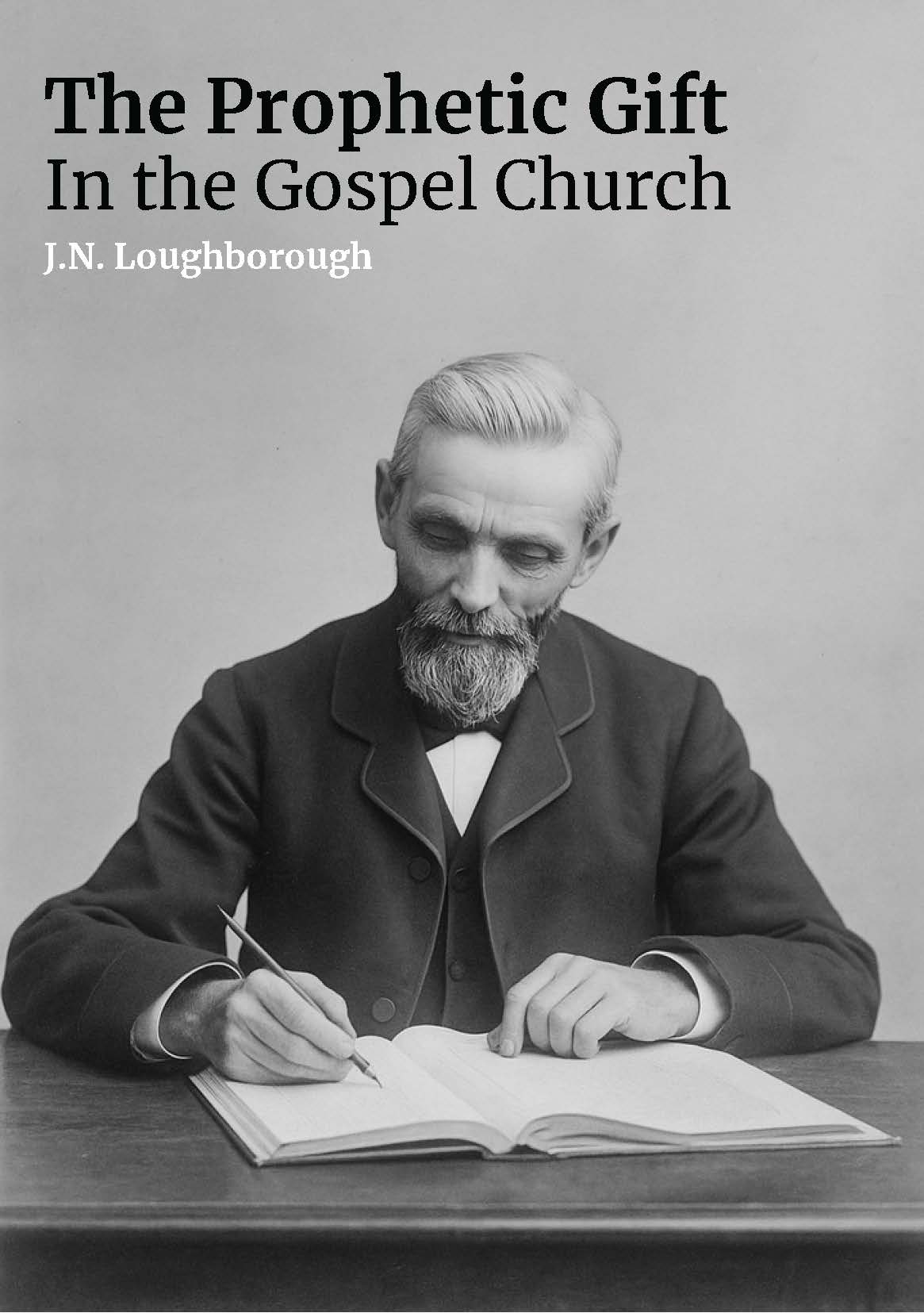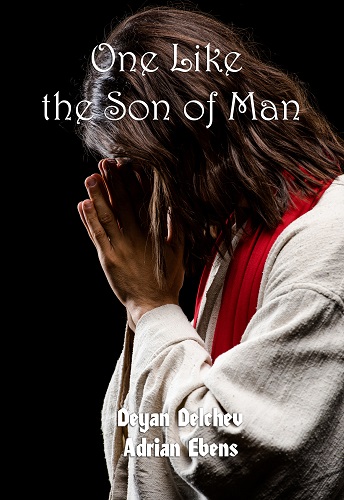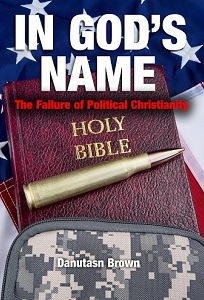The Veil of Flesh
This is the covenant that I will make with them after those days, says the Lord, I will put my laws into their hearts, and in their minds will I write them; And their sins and iniquities will I remember no more. Now where remission of these is, there is no more offering for sin. Having therefore, brethren, boldness to enter into the holiest by the blood of Jesus, by a new and living way, which he has consecrated for us, through the veil, that is to say, his flesh.' (Hebrews 10: 16 - 20.)
If we were to part the veil that separated the Holy Place from the Most Holy Place, we would find that it was situated `by the ark of the testimony' (Exodus 30: 6), which contained the Ten Commandments. The closeness of the veil to the Ark of the Testimony indicated that it was closely associated with the Law of God. It was woven from three colours, which were blue, purple and scarlet, and was decorated with cherubim, which represented the two cherubim, or angels who guarded the Ark of the Covenant:
`And you shalt make a vail of blue, and purple, and scarlet, and fine twined linen of cunning work: with cherubims shall it be made.' (Exodus 26: 31.)
The cherubim depicted on the veil were also symbolic of the angels assisting Christ in His work of redemption, by ascending and descending to and from the throne of the Lamb in heaven (Revelation 5: 6), with the prayers of the faithful:
`Verily, verily, I say unto you, Hereafter all of you shall see heaven open, and the angels of God ascending and descending upon the Son of man.' (John 1: 51.)
The colours of the vail were chosen under divine inspiration, for each colour held deep significance in association with the atoning work of Christ. For instance, the colour blue signified holiness and heavenly things, for the sky blue colour of the sapphire represented the Sanctuary in Heaven, from which the word of God descends to us:
`And above the firmament over their heads was the likeness of a throne, in appearance like a sapphire stone.' (Ezekiel 1: 26.)
It was also symbolic of being sanctified by and covered by the word, or Holy Spirit of God, and the nearness of His Word to His people - for instance just as the High Priest was covered by a blue robe (Exodus 28: 31 - 33), so also were all of the temple vessels covered in blue cloth whenever the Israelites broke camp as they sojourned in the wilderness of sin. The colour blue principally signified sanctification and the forgiveness of sins, for the High Priest represented Christ in the forgiveness and cleansing of sin:
`The blueness of a wound cleanseth away evil: so do stripes the inward parts of the belly.' (Proverbs 20:30.)
The only exceptions to this were the Ark of the Covenant and the Brazen Altar of Burnt offering. Whenever the Ark of the Covenant was moved during Israel's sojourning in the wilderness of sin, it was first covered by the veil, and then covered again by a blue cloth, which signified that this was the Most Holy of all (Numbers 4: 5 - 6). The Altar of Burnt offering was instead covered by a purple cloth; the colour of which is derived from blue and scarlet red. Purple is traditionally associated with royalty, for reason that the dye obtained to make it with was extracted from the Murex shell, which was a rare sea-snail of great value. This signified that the sacrifice of Christ, the King of the Jews and Gentiles, or non-Jews, was undertaken at an infinite cost to the Father and Son and is a priceless gift to the sinner:
`So Mordecai went out from the presence of the king in royal apparel of blue and white, with a great crown of gold and a garment of fine linen and purple; and the city of Shushan rejoiced and was glad.' (Esther 8:15.)
However, purple, blue and scarlet also represented idolatry:
`But they are altogether dull–hearted and foolish; A wooden idol is a worthless doctrine. Silver is beaten into plates; It is brought from Tarshish, And gold from Uphaz, The work of the craftsman And of the hands of the metalsmith; Blue and purple are their clothing; They are all the work of skillful men.' (Jeremiah 10:8-9.)
Which is further translated into the Book of Revelation, where in the apocalypse, we find a scarlet woman arrayed in purple, who sits astride a beast:
`So he carried me away in the spirit into the wilderness: and I saw a woman sit upon a scarlet coloured beast, full of names of blasphemy, having seven heads and ten horns. And the woman was arrayed in purple and scarlet colour, and decked with gold and precious stones and pearls, having a golden cup in her hand full of abominations and filthiness of her fornication: and upon her forehead was a name written, MYSTERY, BABYLON THE GREAT, THE MOTHER OF HARLOTS AND ABOMINATIONS OF THE EARTH. And I saw the woman drunken with the blood of the saints, and with the blood of the martyrs of Jesus: and when I saw her, I wondered with great admiration.' (Revelation 17: 3 - 6.)
The colour scarlet is originally derived from a composite of two words, `shaniy', which properly translates to `the insect or its clour, also stuff dyed with it; scarlet (thread)', and `towla'; which was a species of worm that affixed itself to a tree, then protected her larvae until they were hatched, at which a `crimson fluid stained her body and the surrounding wood.' This dye was utilized for dying the vail which separated the two compartments:
"When the female of the scarlet worm species was ready to give birth to her young, she would attach her body to the trunk of a tree, fixing herself so firmly and permanently that she would never leave again. The eggs deposited beneath her body were thus protected until the larvae were hatched and able to enter their own life cycle. As the mother died, the crimson fluid stained her body and the surrounding wood. From the dead bodies of such female scarlet worms, the commercial scarlet dyes of antiquity were extracted. What a picture this gives of Christ, dying on the tree, shedding his precious blood that he might 'bring many sons unto glory' (Hbr 2:10)! He died for us, that we might live through him! Psa 22:6 describes such a worm and gives us this picture of Christ. (cf. Isa 1:18)" (Henry Morris. `Biblical Basis for Modern Science', 1985, p. 73)
Thus we find, that in the very `fabric' of the veil that separates the Holy Place from the Most Holy Place, we find Calvary depicted in the `cunningly woven thread'!
`My God, my God, why have you forsaken me? Why are you so far from helping me, and from the words of my roaring? O my God, I cry in the day time, but you hear not; and in the night season, and am not silent. But you are holy, O you that inhabit the praises of Israel. Our fathers trusted in you: they trusted, and you did deliver them. They cried unto you, and were delivered: they trusted in you, and were not confounded. But I am a worm (towlah), and no man; a reproach of men, and despised of the people'. (Psalm 22: 1 - 6.)
This alliteration of a worm which `covers' her young is a beautiful depiction of Christ's sinless life covering us, and His blood being poured out on a tree at Calvary for our sins:
`Christ hath redeemed us from the curse of the law, being made a curse for us: for it is written, Cursed [is] every one that hangeth on a tree.' (Galatians 3:13.)
In the Hebraic economy, if you were `hung on a tree' outside the camp, your were accursed of God, for He would not hear your prayers for forgiveness, and you were consigned to die; which is to say you were consigned to die the `second death', which is the eternal death which all the condemned will suffer:
`He that has an ear, let him hear what the Spirit says unto the churches; He that overcomes shall not be hurt of the second death . . . . And death and hell were cast into the lake of fire. This is the second death . . . . Blessed and holy is he that has part in the first resurrection: on such the second death has no power, but they shall be priests of God and of Christ, and shall reign with him a thousand years.' (Revelation 2: 11, 20: 14, 20: 6.)
You were consigned to eternal death - cut off forever from the face of God! John, the `beloved disciple' of Christ uses language that is even more strident than that of Paul, when he tells us that:
`And the Word was made flesh, and dwelt among us . . . ' (John 1: 14.)
In the original Greek, the correct rendition was `And the Word was made flesh, and dwelt among us in a tent'! In other words, Christ assumed a `tent' of flesh. But what type of flesh did Christ partake of, when He dwelt with us in a `tent'? (Bear in mind the pre-incarnate Christ dwelt with Israel in the earthly tabernacle - the `tent' of Israel.)
John knew that if those who believe that Christ did not come in our flesh gained prominence in the Church, then this philosophy would decimate the Church, for even while he was alive, there were those who spiritualized away the one aspect of Christ that closely identifies Him as the Son of Man - , and that is His humanity; for Christ will remain in our glorified flesh which He crucified on the cross for eternity - and for eternity His glorified flesh shall bear the marks of the crucifixion:
`Hereby know all of you the Spirit of God: Every spirit that confesses that Jesus Christ has come in the flesh is of God: and every spirit that confesses not that Jesus Christ has come in the flesh is not of God: and this is that spirit of antichrist, whereof all of you have heard that it should come; and even now already is it in the world.' (1 John 4: 2 - 3.)
In the original Greek, the word which John uses to describe the flesh is the Greek word `sarx'. He uses this word when He tells us that the `the word became flesh (sarx) and dwelt among us in a tent',and again when he says that `every spirit which confesses that Jesus Christ has come in the flesh is of God'. It is also precisely the same word which the apostle Paul uses when he says:
`Forasmuch then as the children are partakers of flesh and blood, he also himself likewise took part of the same; that through death he might destroy him that had the power of death, that is, the devil; and deliver them who through fear of death were all their lifetime subject to bondage' (Hebrews 2: 14).
Therefore the `sarx' which Paul speaks of is the same `flesh' which John speaks of, for if it were not so, he would have told us so by using an entirely different word! But he does not - he employs the word `sarx', and it was in the `sarx' that Christ was made like unto His brethren, and it was in the `sarx', that He crucified sin! John is emphatic when he stresses that anyone who teaches that Christ did not come in the `sarx' is not of God, and this is the spirit of antichrist.
And why? Because if Christ had assumed `flesh' which had not been tempted to sin (which is the flesh of Adam before the fall), then this flesh of the sinless Adam which is mysteriously substituted for ours in the form of `vicarious substitution' cannot save us, for in order to provide a complete atonement for sin, that which is saved must first be assumed - and if Christ came in the `flesh' of Adam before the fall, then this is the only flesh which He can save, for our `flesh' is entirely different to that of a sinless Adam before he `fell' into sin! But as the sinless Adam didn't need saving anyway, then the atonement is relegated to a divine farce! On the cross, Christ became the sin of the entire world and crucified it `in the sarx' at Calvary, so that the condemnation of death which was pronounced upon the entire race when Adam first sinned has been reversed, so that the entire race has been pardoned and put on probation `in Christ':
`Wherefore, as by one man sin entered into the world, and death by sin; and so death passed upon all men, for that all have sinned . . . . even so by the righteousness of one the free gift came upon all men unto justification of life.' (Romans 5: 12, 18.)
But why probation? If the entire race was pardoned when Christ died on the cross, doesn't this mean that all men will eventually be saved? The answer is no - simply because not all men want to be saved. The vast majority of men actively choose to refuse it, because although `justification', or the forgiveness of sins is a free gift, and is freely given to all, in order to benefit from it, we must first receive it! Probation means exactly that. To benefit from it, you must first agree to the terms of the probation - and as those terms mean that you cannot break the law or you will once again go to jail, then if you refuse the `free gift' of justification - thus meaning that you refuse to be `covered' by the precious blood of Christ, you automatically break the law and are once more condemned to die! John uses the phrase `The Word was made flesh and dwelt among us in a tent', so that we might be reminded that the gospel itself is revealed in the daily ministration which took place in the Sanctuary service in the Old Testament, in which the hand of the penitent sinner was placed over the head of a sacrificial lamb that pointed forward in time to Christ as the Lamb of God Who was sacrificed for their sins, so that the sinner might know that sin results in the death of the sinner unless they are covered by the surety of the blood of the Saviour to come:
`Say unto them, "As I live," saith the Lord GOD, "I have no pleasure in the death of the wicked; but that the wicked turn from his way and live: turn ye, turn ye from your evil ways; for why will ye die, O house of Israel?" ' (Ezekiel 33: 11.)
Truly, the vail that separated the Holy Place from the Most Holy Place represented the `veil of flesh' in which Christ veiled his divinity with humanity - for the curse of the law is death (the second death); thus resulting in the end of sin being the eternal separation of the sinner from the Father and His dear Son in a death that is eternal. Thus redemption comes only through Christ, for only He bears the necessary `qualifications' to redeem us and wash us clean in His blood, so although our sins be red like crimson (towla), they shall be washed clean in His blood, so that they might be white as snow:
`Come now, and let us reason together, saith the LORD: though your sins be as scarlet, (shaniy) they shall be as white as snow; though they be red like crimson (towla), they shall be as wool'. (Isaiah 1: 18.)
Christ stands between us and sin, both one with humanity and one with the Father, for sin separates us from the Father, who dwells with us in Spirit in the Most Holy Place, by the Shekinah Presence of His Holy Spirit which He shares with His Holy Son:
`Having therefore, brethren, boldness to enter into the holiest by the blood of Jesus, by a new and living way, which he has consecrated for us, through the veil, that is to say, his flesh; and having an high priest over the house of God; let us draw near with a true heart in full assurance of faith, having our hearts sprinkled from an evil conscience, and our bodies washed with pure water.' (Hebrews 10: 19 - 22).
It should never be forgotten that while the vail is the way by which we enter the Most Holy Place -the vail represents the next phase in the ministry of Christ. Christ closely identifies with us through His `veil of flesh', and thus it is `in' Christ by which we enter the Most Holy Place. Nothing which is tainted by sin can enter there, for it is the `Most Holy Place' where God dwells with His people, and God is a consuming fire against sin. Thus it is the glorified flesh of Christ which makes it possible for the sinner to enter by faith into the Most Holy Place, for the veil, that is His flesh, represents the separation of the Spirit from the sinful flesh, for `in' Him were these two natures, and by the Spirit Christ crucified His flesh on the cross - and the only way by which we can enter into the Most Holy Place is `in' His glorified flesh which has been purified by suffering.
More specifically, we enter into `the holiest of places' by the very same flesh of Christ in which:
` . . . . in all things it was essential for him to be made like unto his brethren, that he might be a merciful and faithful high priest in things pertaining to God, to make reconciliation for the sins of the people.' (Hebrews 2: 17).
Thus the Father reconciles Himself to us by His dear Son, who has crucified our sins `in the flesh', so that we might have `our hearts sprinkled from an evil conscience and our bodies washed with pure water' (Hebrews 10: 22), so that we might conform to His commands, and as we shall shortly see in regard to the story of Mary Magdalene - render true obedience to Him through a `faith which works by love' (Galatians 5: 6). For it was in Gethsemane that Jesus suffered and died in our flesh, forever identifying Himself with us and treading the winepress alone, for Gethsemane means `oil press', and just as the children of Israel were commanded to bring unadulterated oil to the Sanctuary so that the lamps within the Tabernacle might burn with the Light from the Word of God continually, so also was the life of Christ crushed out on the cross, so that we might gain a heart-felt understanding of the infinite cost of mercy that enabled the unadulterated Light of the `everlasting gospel' to shine its light upon the entire world (Revelation 14: 6).
By faith we come to Christ in the outer court, with all of our defects of character, cast ourselves at His feet and die `in' Him on the Brazen Alter of Sacrifice. By faith we believe that our Saviour `was made like unto His brethren', and took upon His sinless nature the physical nature of the fallen Adam, in which all of humanity had been further weakened by the cumulative effects of four thousand years of yielding to the power of sin. By faith we believe that His physical human nature as therefore subject to the infirmities and weakness of the degenerate flesh, and it is by faith we enter into the Most Holy Place, where Christ now pleads his blood for the race of men during this time of judgement. And it is by the `veil' of flesh' - His flesh; that we by faith enter into the Most Holy Place in which the Shekinah Spirit of the Father and Son dwell:
`For we have not an high priest which cannot be touched with the feeling of our infirmities; but was tempted in all points as we are, yet without sin'. (Hebrews 4: 15)
By faith we believe that although Christ was not exempt from our natural passions which inflame our tempers and further tempt us to sin, He had none of these natural passions or tendencies to sin by natural right, for as the Son of God, His divine connection with the Father by the power of the Holy Spirit of the Father was just as natural for Him, as it is unnatural for us, so that by taking hold of the Spirit of His Father by faith, He never yielded to sin. By faith, we believe that His perfect life covers our past life, and having been reborn in the Laver of Washing, or baptismal font at its feet, His righteousness has been imputed to us and covers our past sins, for if we are to gaze at the beaten brass of the Laver of Washing, none are reflected, for we have now exchanged our filthy robes for the perfect life of Christ and have been reconciled to God through Christ. But does this mean that now we have been saved `in' Christ, can we now continue in wilful sin? The answer is no, as the standard of righteousness is the Law, and that which `misses the mark' of righteousness and falls short of it, is sin - and we again stand condemned. The apostle Paul stated it in this way:
`Well then, if we emphasize faith, does this mean that we can forget about the law? Of course not! In fact, only when we have faith do we truly fulfil the law.' (Romans 3: 31, NLT)
For although the atonement provided full forgiveness for sin, the Sanctuary service demonstrates that it does not provide atonement for wilful sin - which is the presumption that one can still be saved, yet at the same time return to our evil ways, for sin such as this rejects the salvation has been wrought for us by Christ and this calls for repentance on the part of the sinner. We might fall, and stray from the Lord; but it is by faith that we repent so that Christ might bring us to a closer relationship with Him in the Holy Place, `by the blood of sprinkling', at which we are sanctified, or made holy by Christ. For when Christ was crucified, He entered into the Holy Place and began to perform His priestly duties in this first compartment of the Sanctuary, as the outer court experience does not cover present sins. It is in the Holy Place where His righteous character is imparted to us, for as we begin to dimly comprehend the infinite cost of His Sacrifice for us, our attitude changes from wanting to sin, to not wanting to sin, by a faith that works by love. (Galatians 5: 6). It is the same type of love which compelled Moses to declare to the Lord to blot his name out of the Book of Life, so that his people might be saved, and was demonstrated to us on the cross, for when `while we were yet enemies to Him, Christ died (the second death) for us' (Romans 5: 8).
This is the type of love which Christ promises to write `in our hearts and in our minds', and can only be found by entering into the Most Holy Place with Him, for this type of love not only casts out fear, but also casts out `self' - and looking to `self' instead of Christ is the origin of all sin.
This unconditional love which is imparted into our hearts is true sanctification, for in theological terms justification is imputed, while sanctification is imparted - by some mysterious process of alchemy which we don't understand, His Spirit of unconditional love is imparted to us, so that our primary concern is the salvation of others, instead of the minding of `self'.
It is in the Holy Place where Christ provides restoration from the power of sin. The Father is not satisfied to merely save us, for it is His desire that we overcome the sins that so easily beset us, so that we can by faith enter into the Most Holy Place, and behold He and His dear Son face to face, instead of through a glass, darkly. An example of this is the woman that was found in adultery. When the Pharisees were about to stone her, Christ wrote the sins of her accusers in the dust of the ground, and then declared to them:
`He that is without sin among you, let him first cast a stone at her.' (John 8: 7.)
After they had all disappeared, humbled by the words which pricked their conscience, He asked the woman:
`Woman, where are your accusers? Has no man condemned you? She said, "No man, Lord". And Jesus said to her "Neither do I condemn you, go and sin no more." (John 8: 10, 11.)
This woman is generally believed to be Mary Magdelene, who anointed His feet with tears, and is a lesson in humility for all - for there was none baser than her; yet she is greatly beloved of Christ. Christ wishes that all were of the same character of Mary, for Mary had sinned much, had been forgiven much and therefore loved much. Her faith had saved her, and demonstrates to us that a saving faith is a faith that works by love (Galatians 5:6):
`And he turned to the woman, and said unto Simon, See you this woman? I entered into your house, you gave me no water for my feet: but she has washed my feet with tears, and wiped them with the hairs of her head. You gave me no kiss: but this woman since the time I came in has not ceased to kiss my feet. My head with oil you did not anoint: but this woman has anointed my feet with ointment. Wherefore I say unto you, Her sins, which are many, are forgiven; for she loved much: but to whom little is forgiven, the same loves little. And he said unto her, Your sins are forgiven. And they that sat at food with him began to say within themselves, Who is this that forgives sins also? And he said to the woman, Your faith has saved you; go in peace.' (Luke 7: 44 - 50.)
For although the atonement provided forgiveness for sin in the outer court by the Brazen Altar of burnt offering, it is in the Holy Place where Christ ministers His blood to us as He performs His priestly duties in the first compartment of the Sanctuary, so that we might be provided with restoration from the power of sin, and are commanded to `go and sin no more'. It is only by faith, and specifically a `faith that works by love' which prepares us to follow Christ by faith into the Most Holy Place, for God is not satisfied to merely save us, for it is His desire that we overcome the sins that so easily beset us, so that we might be perfected by His love, which works obedience to His Law.
The only way by which we can render true obedience to the Ten Commandments, and then enter into the Most Holy Place so that we can gain a deeper understanding of the events that transpired at Calvary, is by the faith of Jesus, which is a faith that works by love' (Galatians 5: 6).
`Here is the patience of the saints: here are they that keep the commandments of God, and the faith of Jesus' (Revelation 14: 6).
The faith of Jesus is a faith that works! It is a faith that works by love. But it is no`ordinary' type of love, for we would never have comprehended it, unless it was first revealed to us at Calvary.





